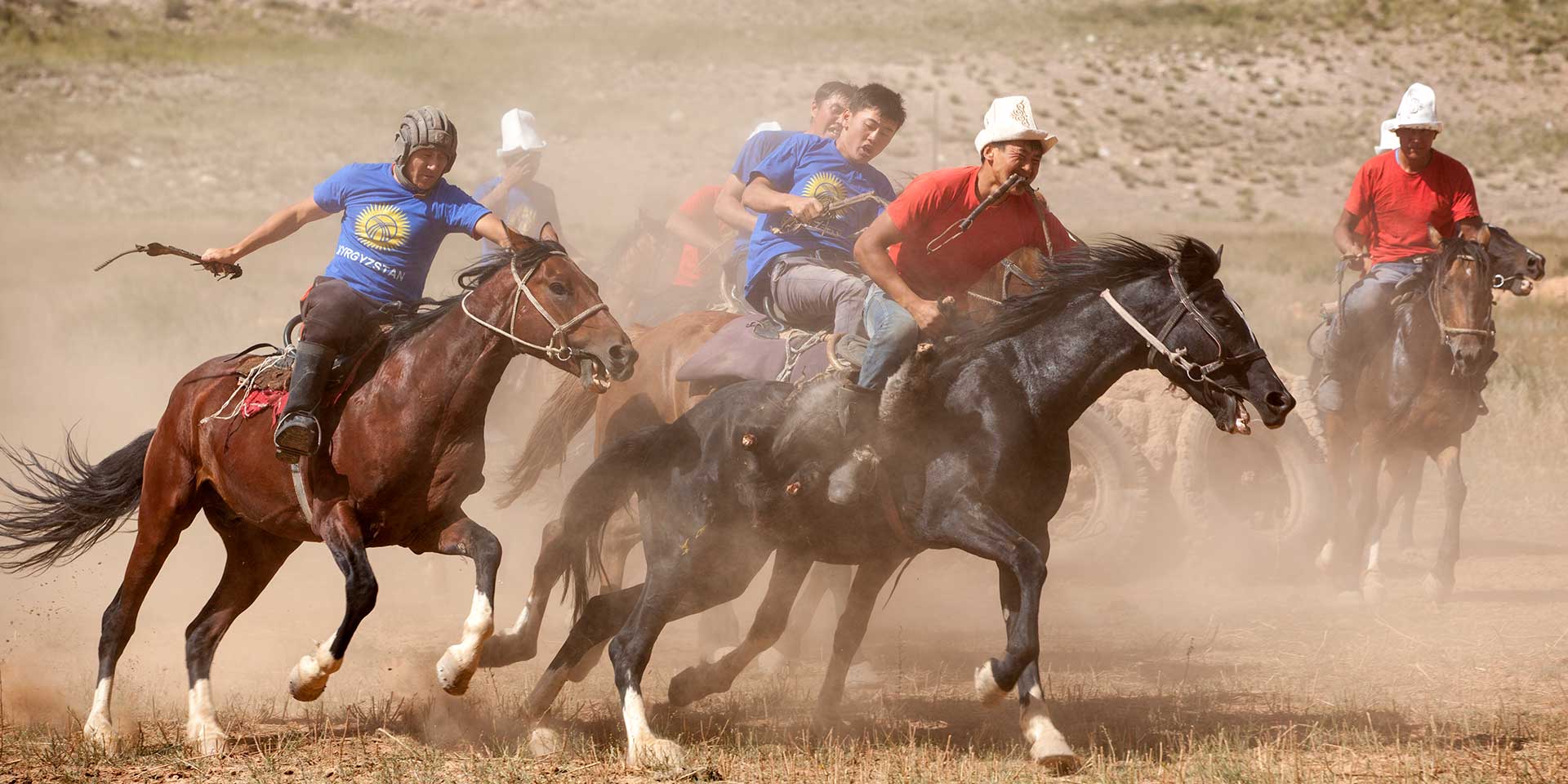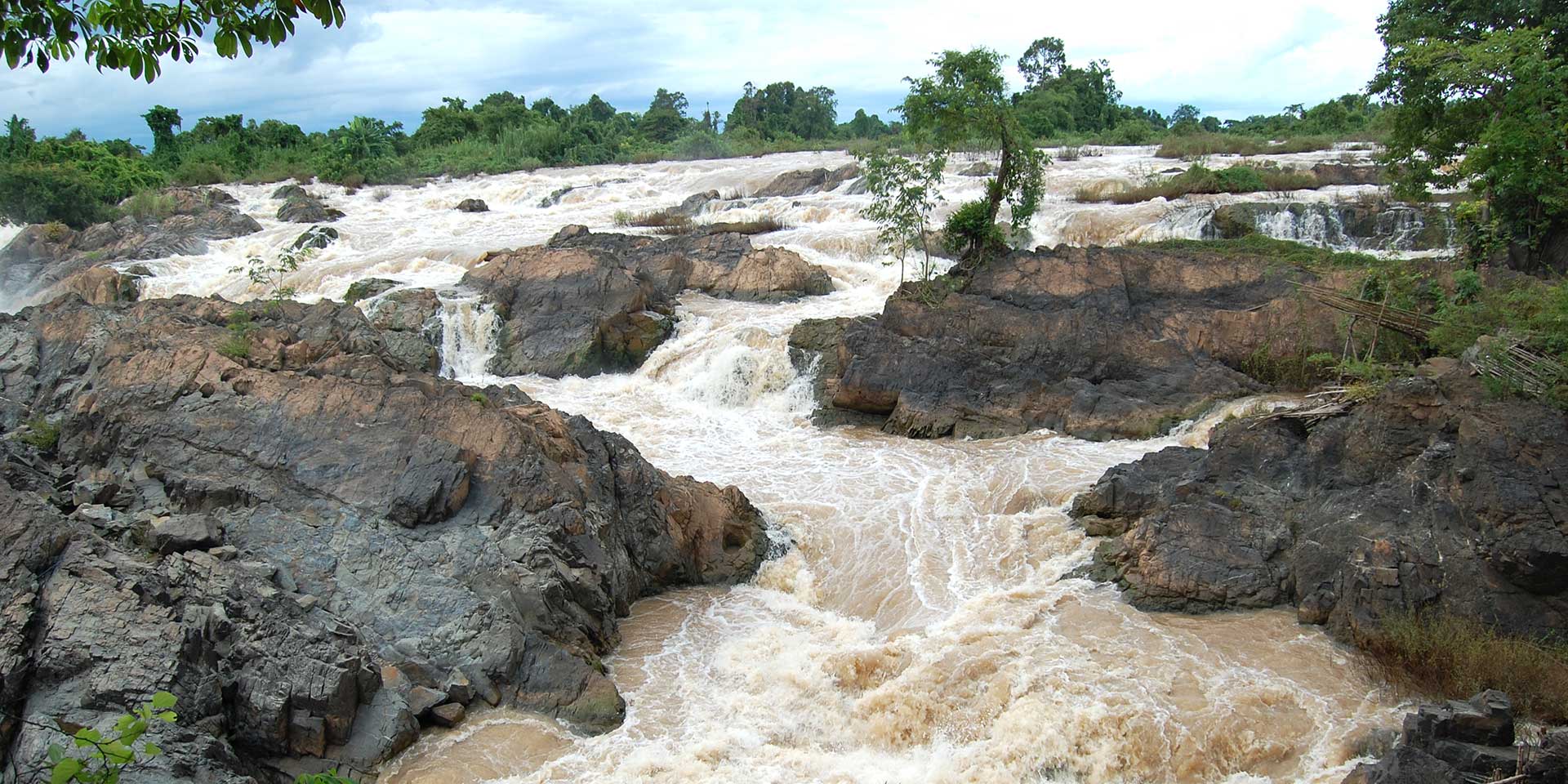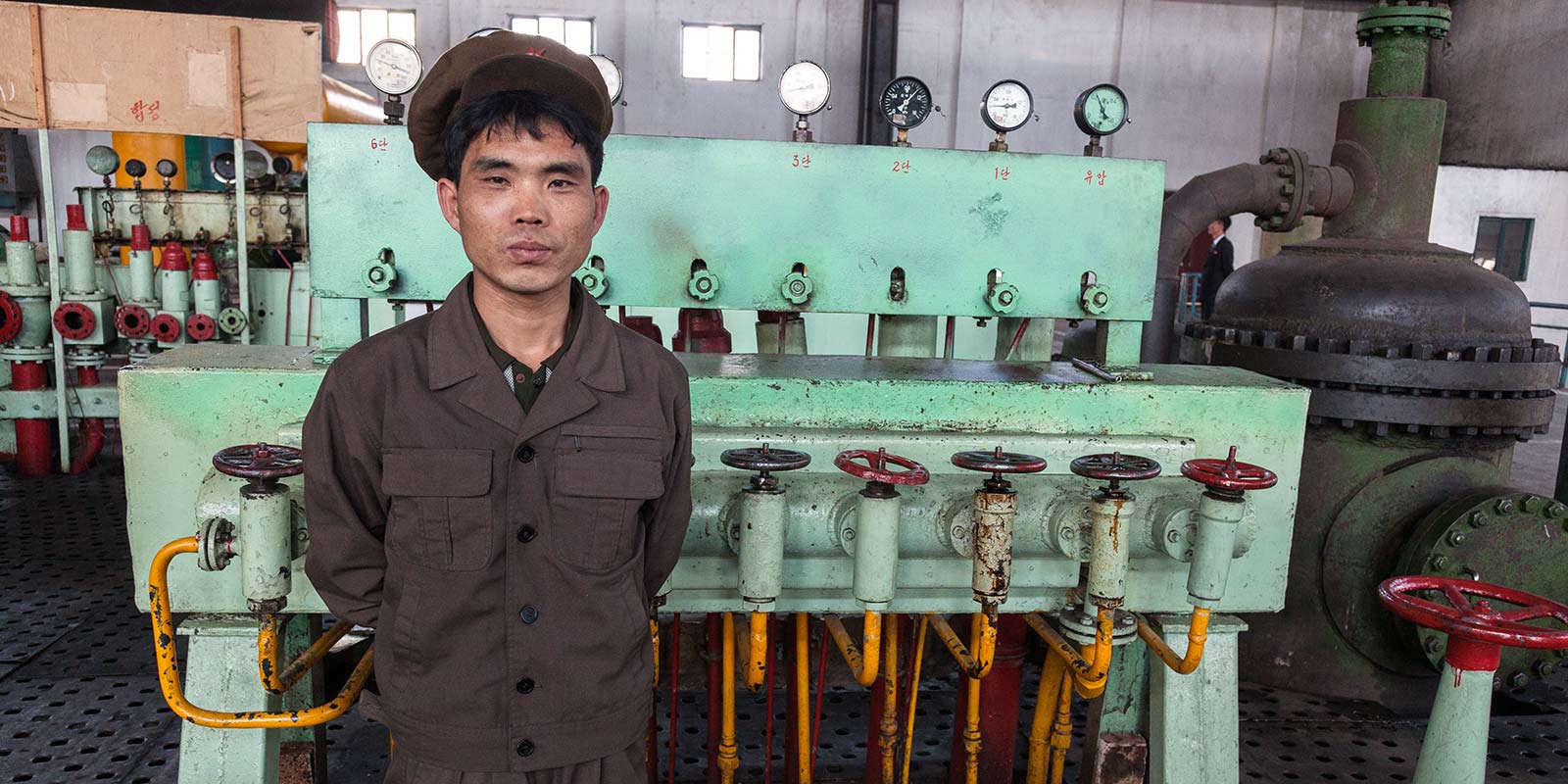
While North Korea itself may seem to many like untrodden territory, I’m fortunate to have had the chance to cross its borders several times. I’ve been to all the major tourism hotspots (if you can call them that?), and even some that were off-the-beaten-path. So on this – my most recent trip to the DPRK – I decided to embark on a road trip unseen by most outside of the country, from Pyongyang to Hamhung and Wonsan on North Korea’s east coast.
I set off in the late afternoon from Pyongyang on the 107-mile-long “Pyongyang-Wonsan Tourist Motorway” – an odd name for a road that leads in the direction of mostly untouristed spots, but hey, this is North Korea. The road was built in 1978, and looked at first to be a nice wide, open road. But in this part of the world, looks can be deceiving, and I was soon to discover that it was built in a most unusual way, using large concrete paving slabs. The result was a rather bumpy, uncomfortable drive.
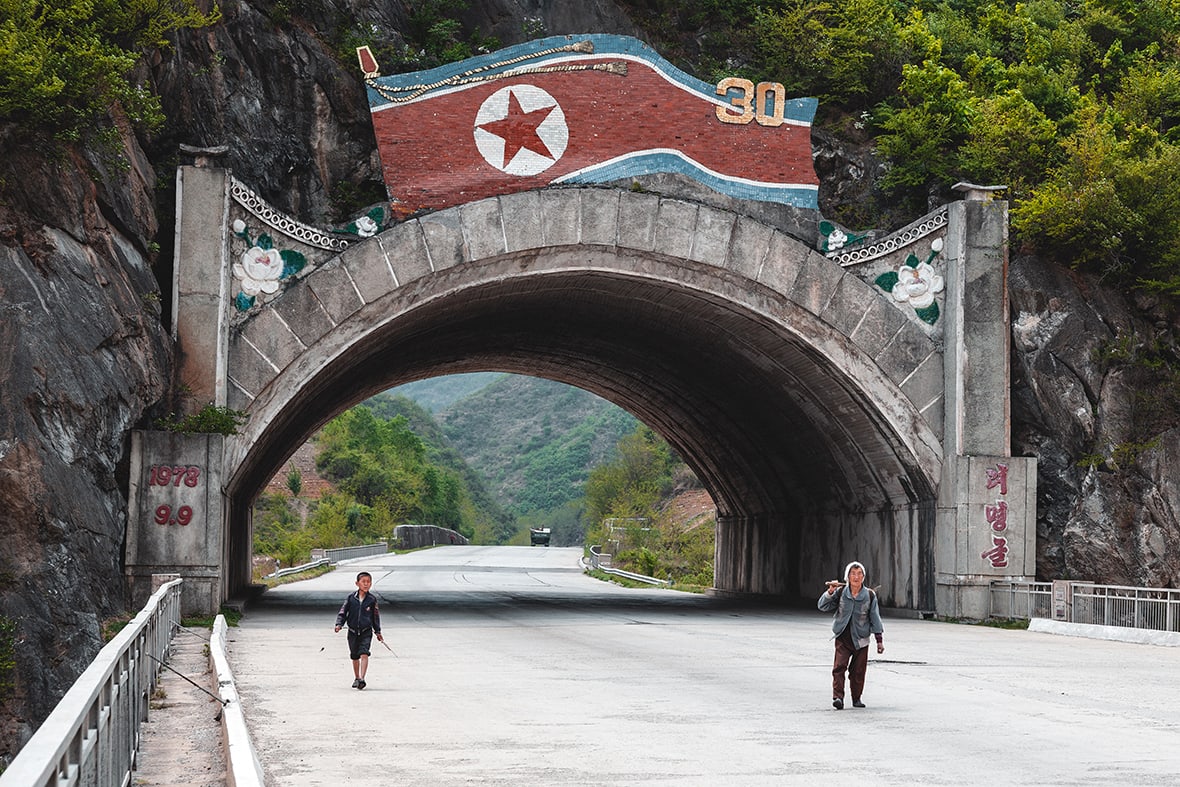
An iconic tunnel on the Pyongyang-Wonsan Tourist Motorway
Road conditions aside, the countryside that passed by my window on our three-hour drive was beautiful. We enjoyed scenes of rice paddies, farms, and mountains. Though there were few cars on the road, we did see a number of people (many of them soldiers) stopped alongside it – either fixing their cars or resting. We also happened to drive through quite a few tunnels along the way. One of the longer tunnels had a very memorable painting of the DPRK flag overtop of it.
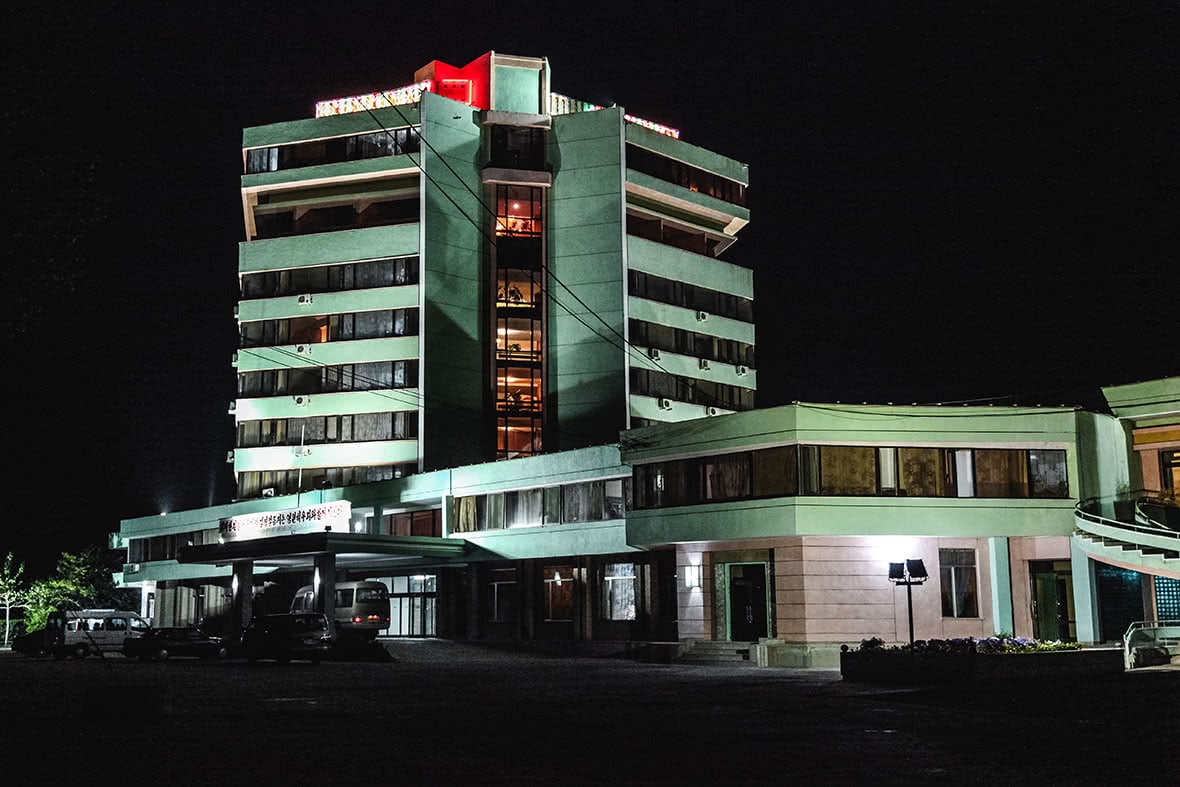
The Dongmyong hotel in Wonsan
Nighttime had settled in by the time we pulled into the Dongmyong hotel in Wonsan. Known as the best in town, the hotel was quite comfortable and had a “newish” feeling due to the rooms having been recently renovated. We dined on seafood at a local restaurant nearby – as usual, they hid us in a private room in the back, separated from the other patrons. The reason for them hiding us in a private room – they would say – is that tourists are VIPs, and therefore we are entitled to a private room. I think the reality is that they don’t really want us to mix too closely with the locals, however. We later returned to our hotel, perched right on the water and overlooking the harbor – shame we didn’t get to see much of it though, as we would be up early the next morning to continue our journey to Hamhung.
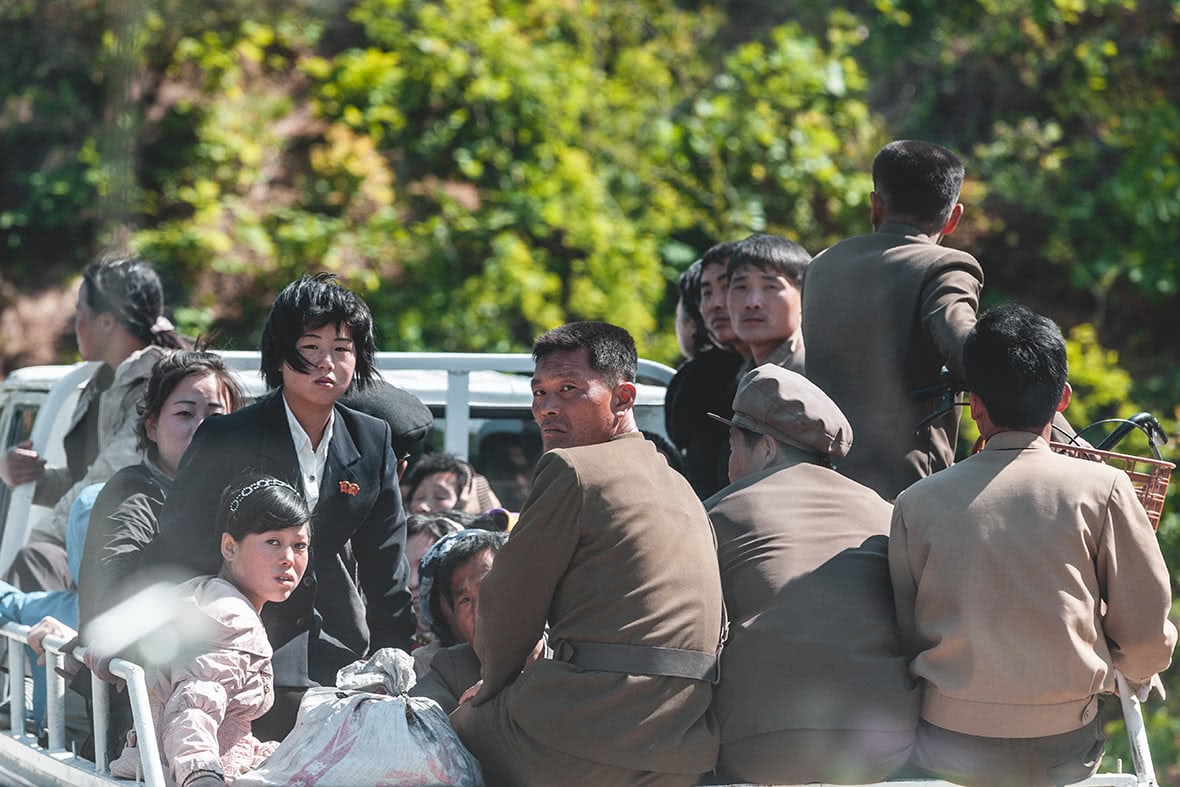
Locals peering suspiciously into our van.
On our drive the next day, we found the coastal road taking us from Wonsan to Hamhung to be equally interesting as the first motorway, as more beautiful scenery and farms flanking either side of the road passed us by. I caught many locals staring back at us – like this curious group – who had clearly not seen many foreigners in this part of the country before!
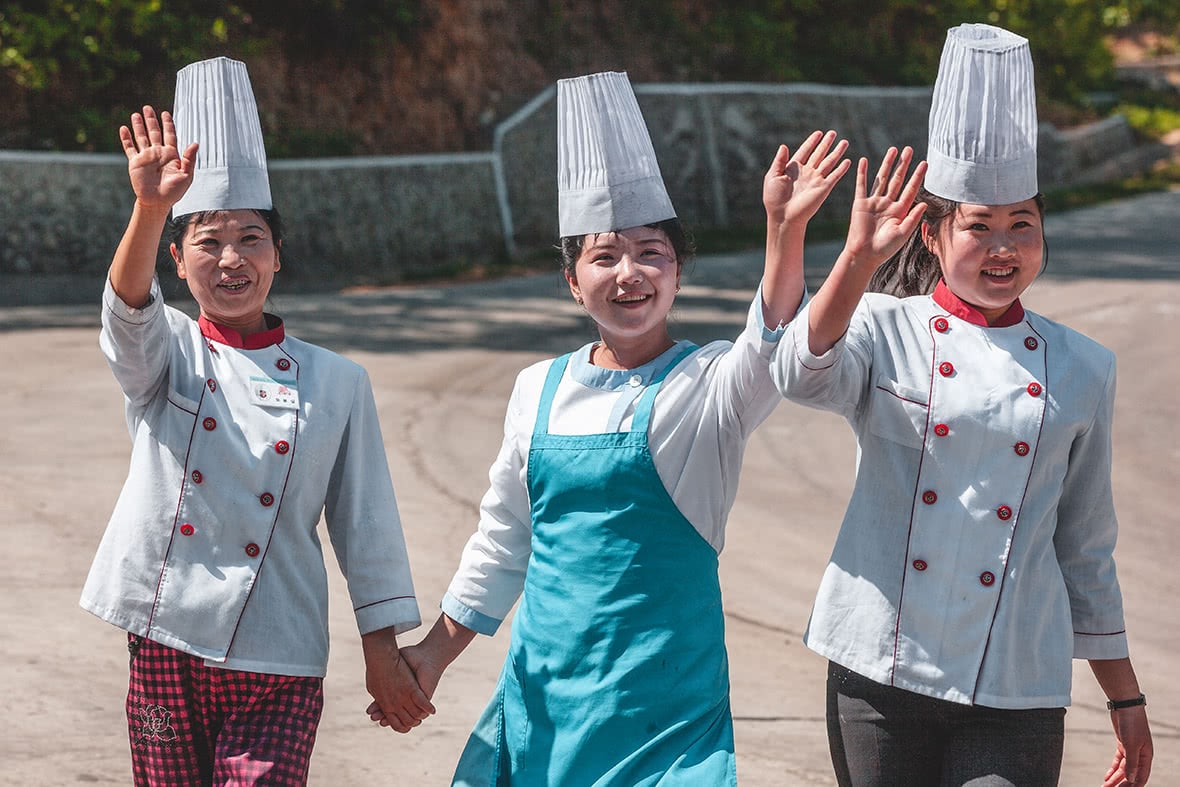
Friendly cooks at a rest stop on the way to Hamhung
Along the way, we stopped for a quick break at a truck stop (yes, they have them in North Korea too!). A small group of women adorning chef hats caught my eye. I approached them and asked if I may take their photos. Predictably shy, they declined my request at first, but I have learned that persistence pays off. In the end I got my photo and the women graced me with warm smiles, feeling much more comfortable with me as they waved us goodbye.
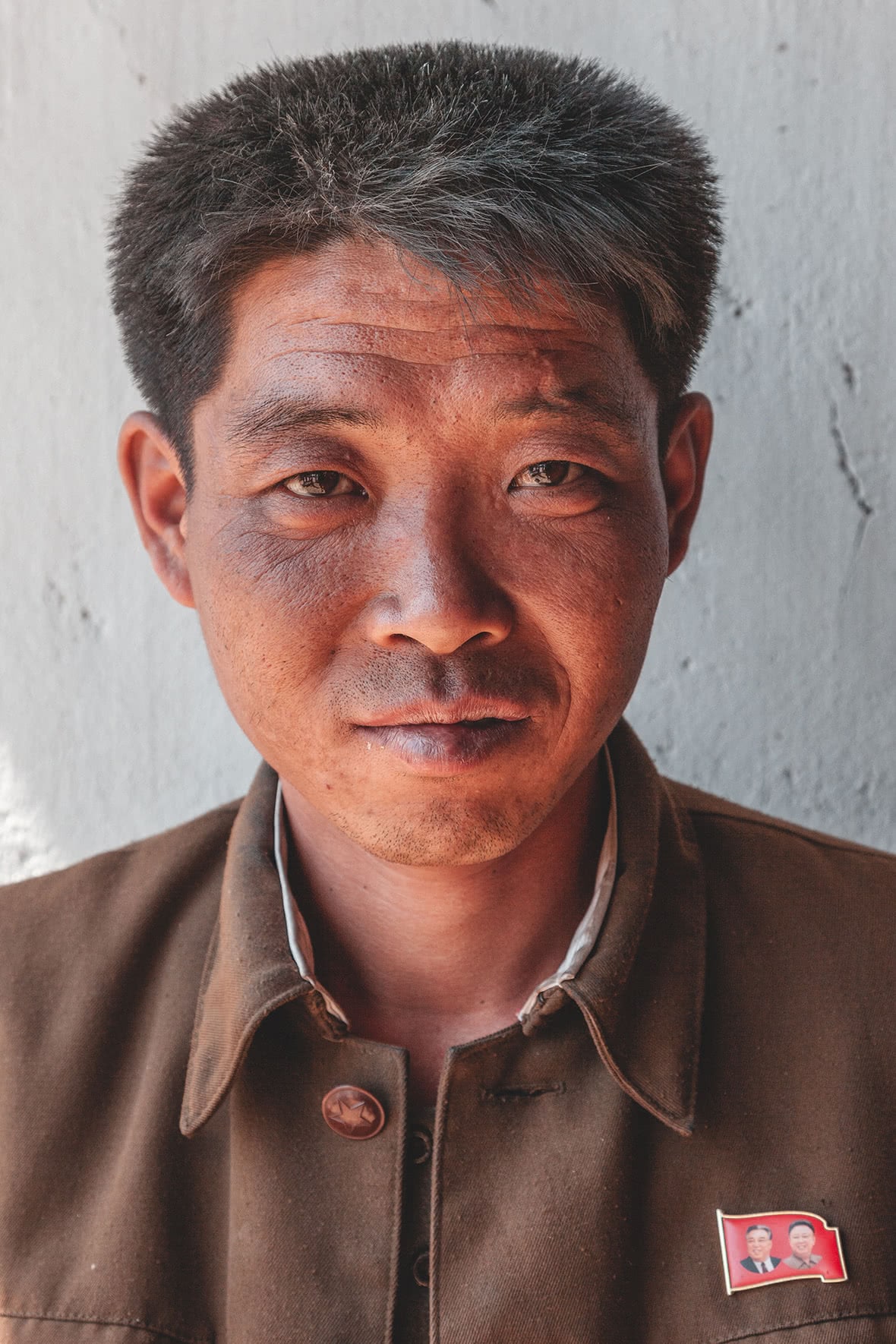
A worker at the Tongmyong Cooperative Farm
Finally, we arrived in Hamhung. We stopped in the city’s outskirts to check out the Tongmyong Cooperative Farm. We observed farmers going about their daily tasks in the field, and next were greeted by the farm’s leader, who took us on a tour of their “museum”. For me, the most fascinating aspect of this visit was speaking with the farmers themselves, whose trucks looked to be straight out of the 1950s.
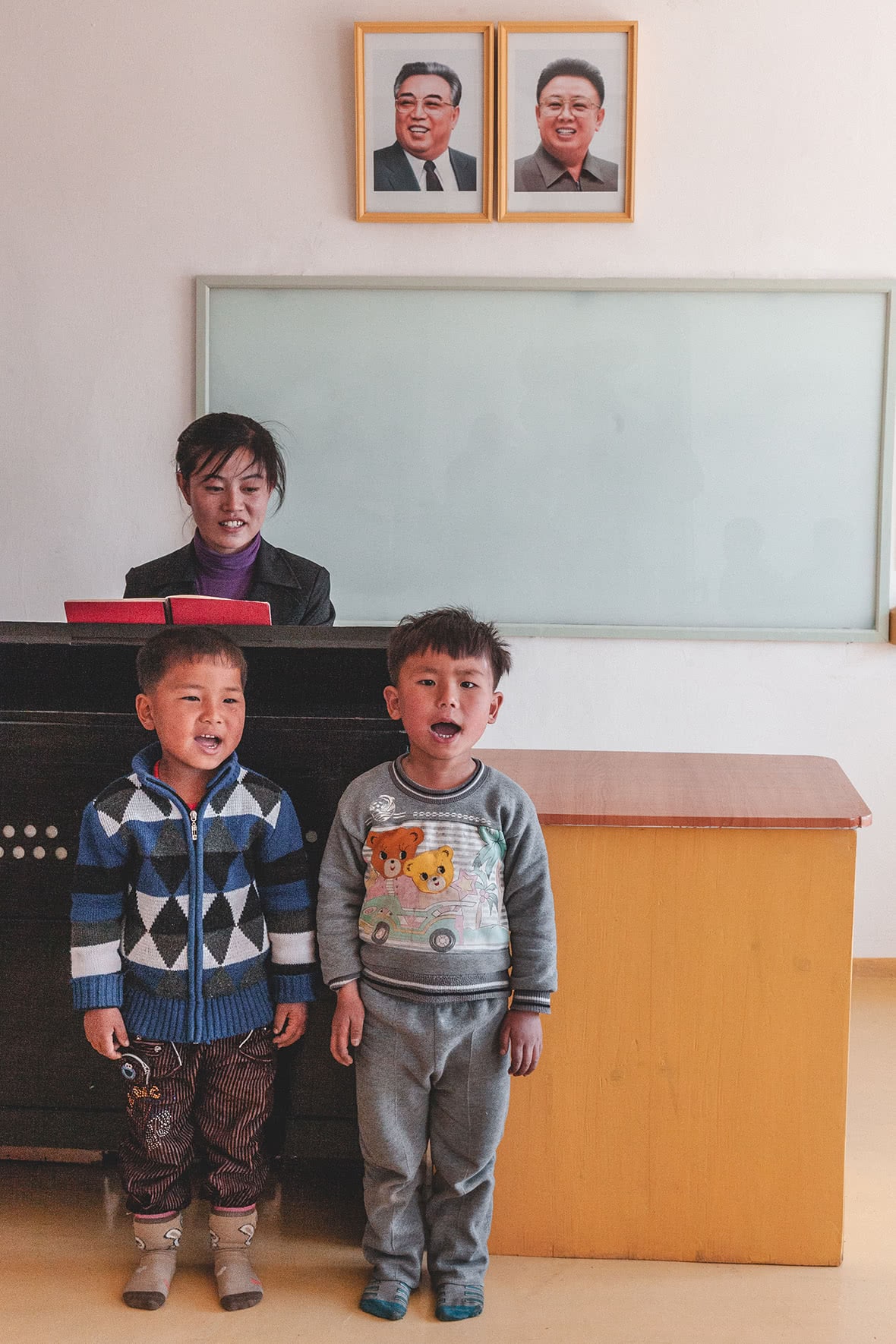
Kindergarten students at the co-operative farm singing patriotic songs .
The co-op was also home to a kindergarten, and we had the chance to pay the children a visit. As is common from my previous experiences at schools in North Korea, the students were prepared for our arrival. They sang patriotic songs for us – in Korean of course (the only words I could pick out were Kim Jong Un, the country’s Supreme Leader). We went from classroom to classroom saying hello to the students, before heading into the city of Hamhung to check in to our hotel.
North Korea’s second-largest city, Hamhung boasts a population of 768,551 people. It has only been open to tourists since 2010, and remains to this day quite restricted for foreigners. I was thrilled to be in a place where few tourists have ventured. There weren’t many cars on the road, but there was still plenty of action, with people walking, pushing carts, and the like. We checked in to the Sin Hung San Hotel, ideally-located in the town’s center and had lunch.
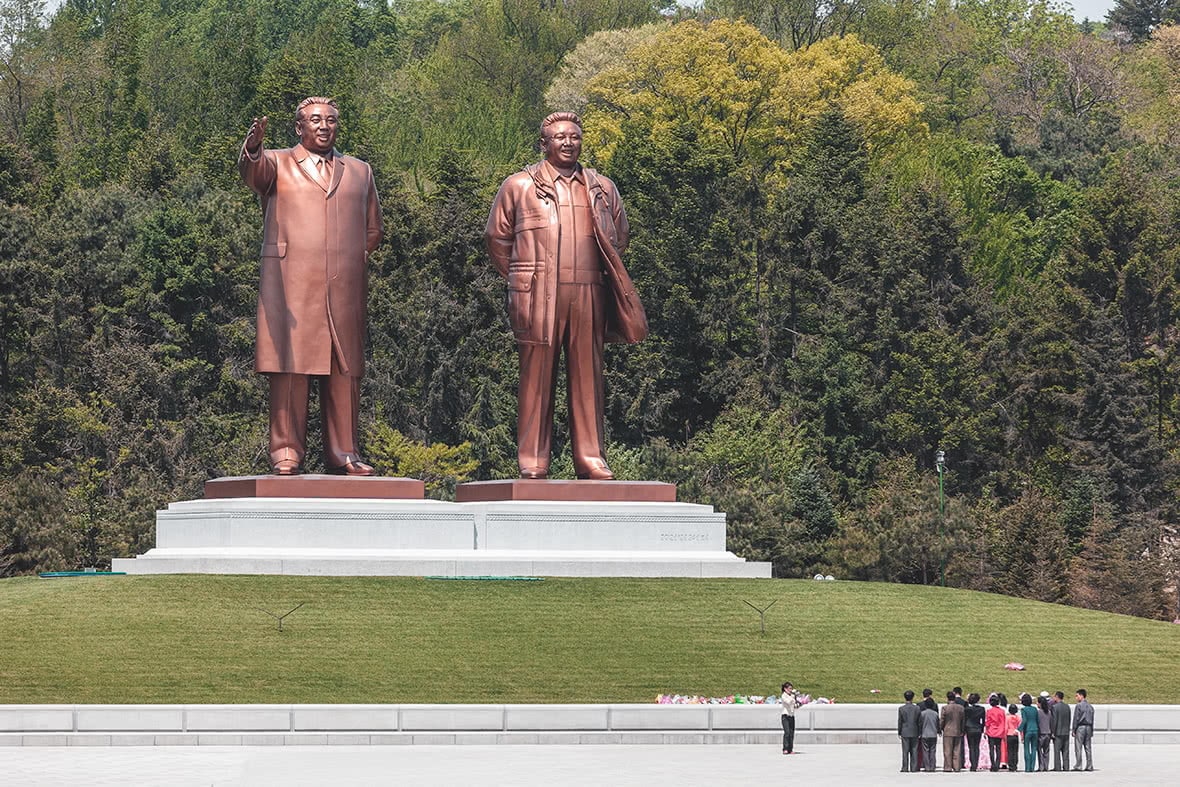
Statues of Kim Il Sung and Kim Jong Il tower over the surrounding central park
First on our Hamhung itinerary was the Kim Il Sung statue and central park, which looks out over the city. As we approached the monument, commotion further down the road caught our attention. It appeared to be a parade, likely that of students celebrating their victory in a national football tournament. Wanting to get a closer look, I strayed from our tour group, but this unsettled our guides, since we hadn’t yet presented flowers to the statue of the Dear Leader – a favor asked of each tourist upon their arrival in each big city. We did so quickly, just to satisfy our guides, and scrambled over to catch the tail end of the parade, with the young students proudly marching down the road. But as I already knew, impromptu itinerary deviations are not looked upon favorably in North Korea, and I could see the discomfort on my guide’s faces. So, after snapping a few good photos, we headed back to the statues to get a good view of the city, and learn some rehearsed facts and figures (also part of the planned itinerary) from our guides. A friendly man came to join us as we gazed upon Hamhung’s cityscape, who we later learned was the head of tourism for the city.

Hamhung students celebrating the victory of their local football team.
After lunch, we visited the home of Ri Seong Gye, the first king of the Joseon Dynasty of Korea. Built in the traditional Korean style, the house was beautifully-painted.
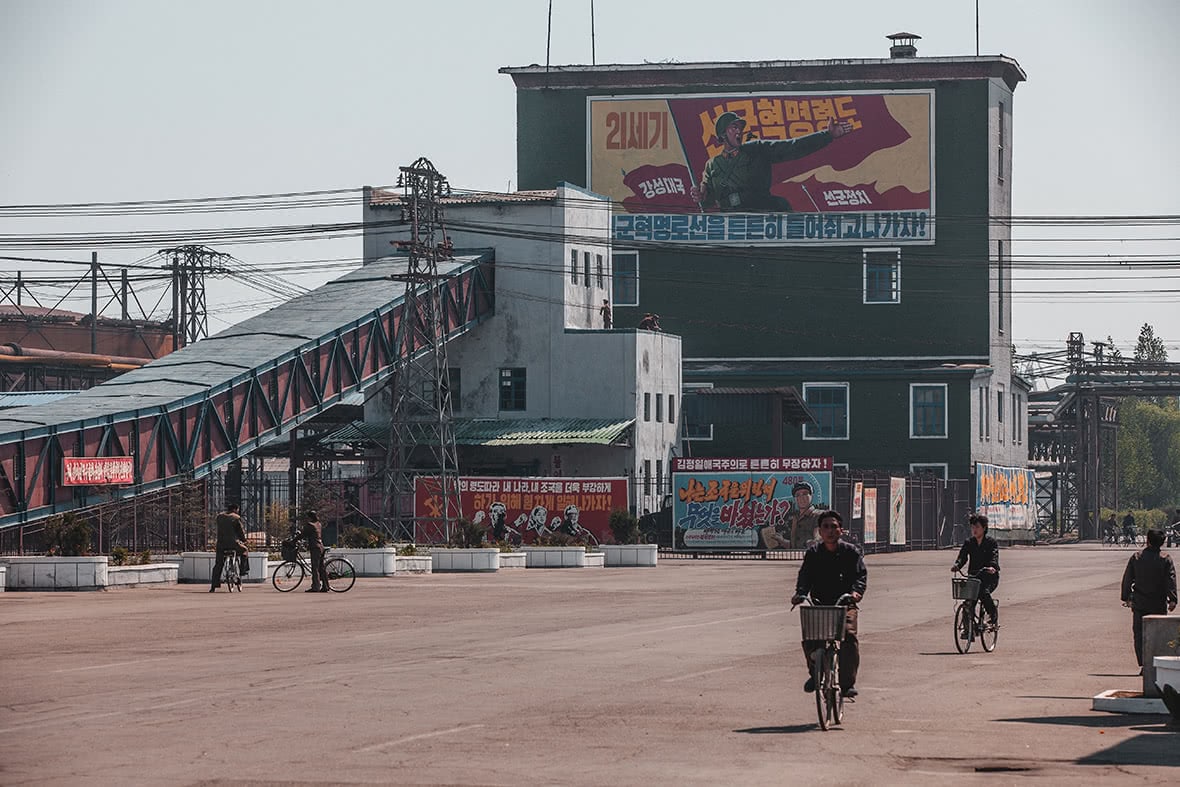
Taking a stroll on the grounds of the Hungnam Fertiliser Factory
Our next stop was at the Hungnam Fertiliser Factory, which – believe it or not – became a true trip highlight for me. Built by East Germans, stepping through the gates of this factory was like stepping into a time warp. On the walls hung large socialist posters, and the factory equipment appeared to have been made some time in the 50s. The leader of the factory met us and gave us a tour of his facilities – as was becoming a common theme during this trip! Despite its apparent age, the plant was spotless.
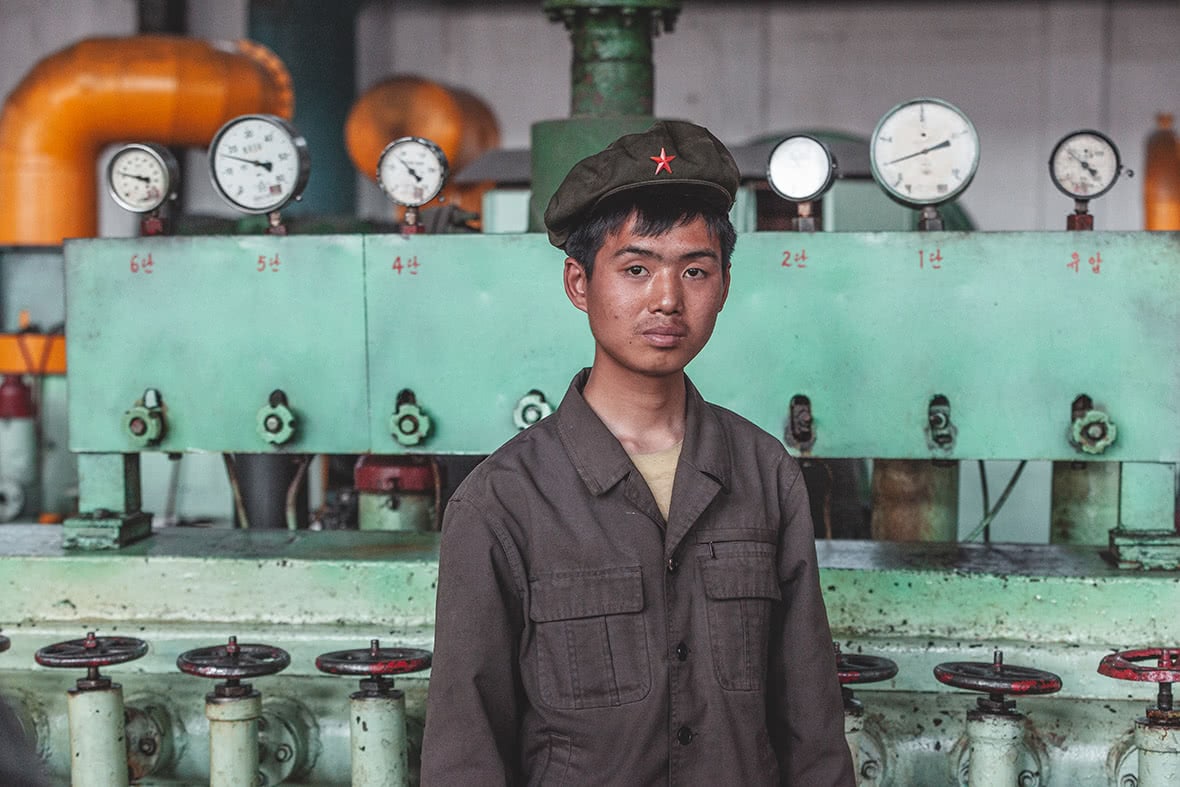
A worker at the Hungnam Fertiliser Factory
We had the opportunity to observe the workers – most of whom were staring at the strange gauges and working dials on the antiquated equipment. The photos I took here became some of my favorite of the trip, mostly because I knew that very, very few non-North Koreans had ever set foot in this place. Indeed, the factory was so restricted, that it was expressly stated that I ought to ask before taking photos. This photo of a guy cycling past with clutching an AK-47 is probably one of the reasons for that rule…
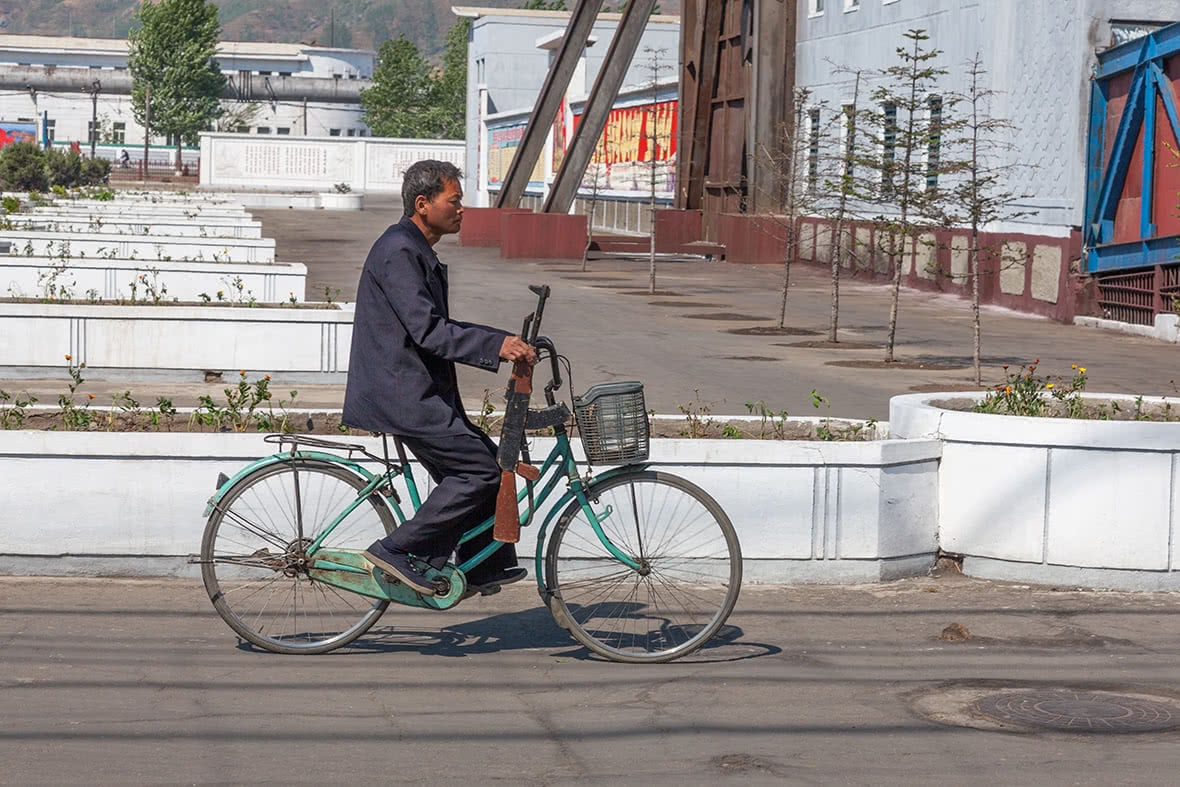
A worker at the Hungnam Fertiliser Factory cycling past me with an AK-47.
After a long day on the road, we decided to head to the beach. Yes, North Korea has beaches! We stopped at Majon, which had surprisingly soft sand and tame surf. We sat and drank some beers we’d picked up along the way and enjoyed the scenery. The water – despite its beauty – seemed uninviting to me at 50 degrees Fahrenheit, but two of my travel companions jumped straight in! We ended up staying here for a few hours, watching the sun set, and enjoying our Ponghak beers.
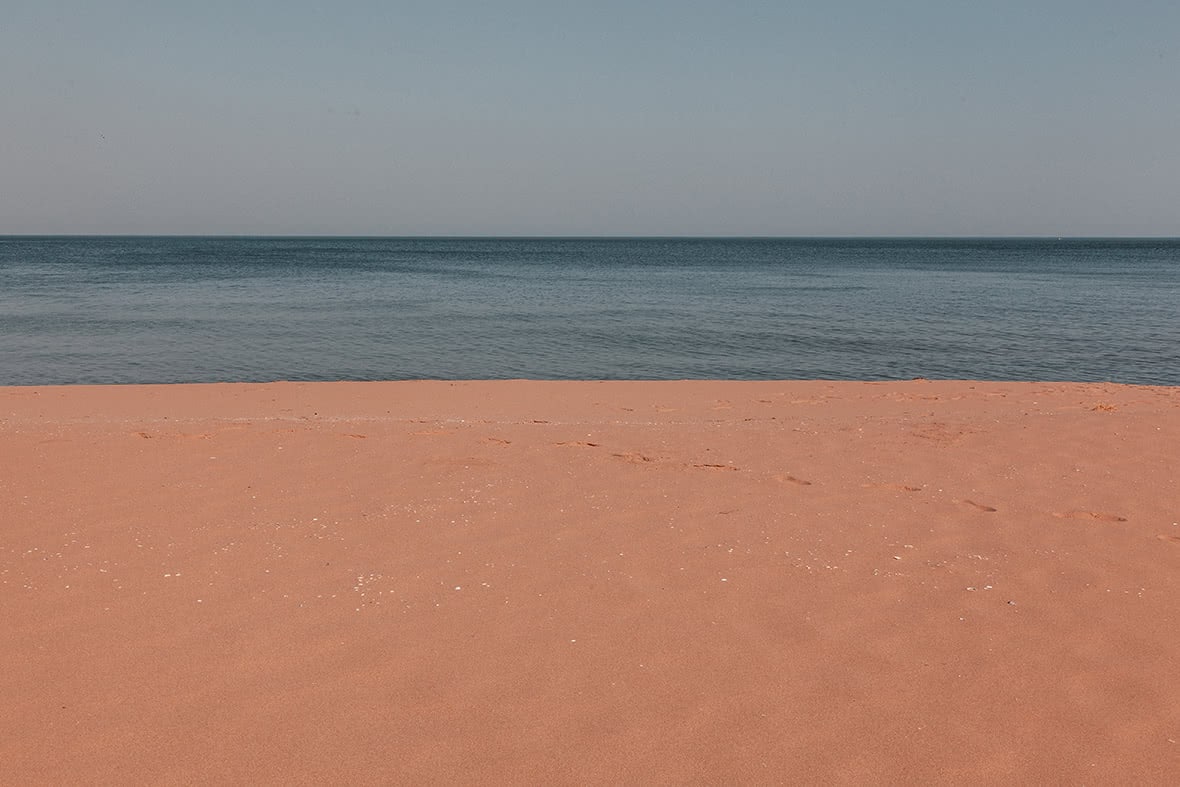
Hamhung’s two other attractions – the Provincial Revolutionary Museum and the Hamhung Grand Theatre – were unfortunately closed while I was visiting, so it was time to head back to Wonsan the following morning.
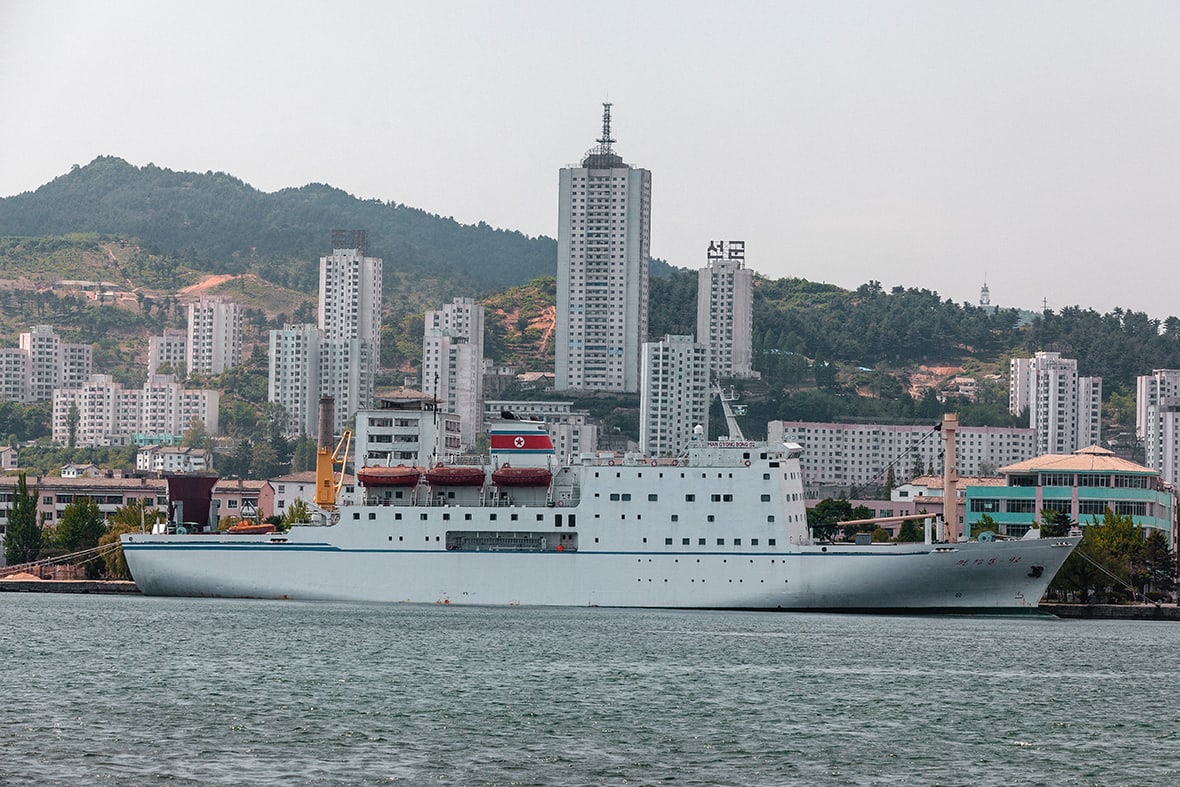
The Mangyongbong-92 passenger ferry in Wonsan harbor.
Now that I finally had the chance to see Wonsan during the day, I realized what a pretty city it is. The harborfront port city is framed by hills, and is becoming a summer destination for North Koreans, with resorts and entertainment venues popping up. Unfortunately, most of the city was restricted to us as foreign tourists. Disappointed, but still wanting to make the most of our visit, we started off by taking a short walk around Wonsan’s waterfront, where we observed men fishing in the sea.
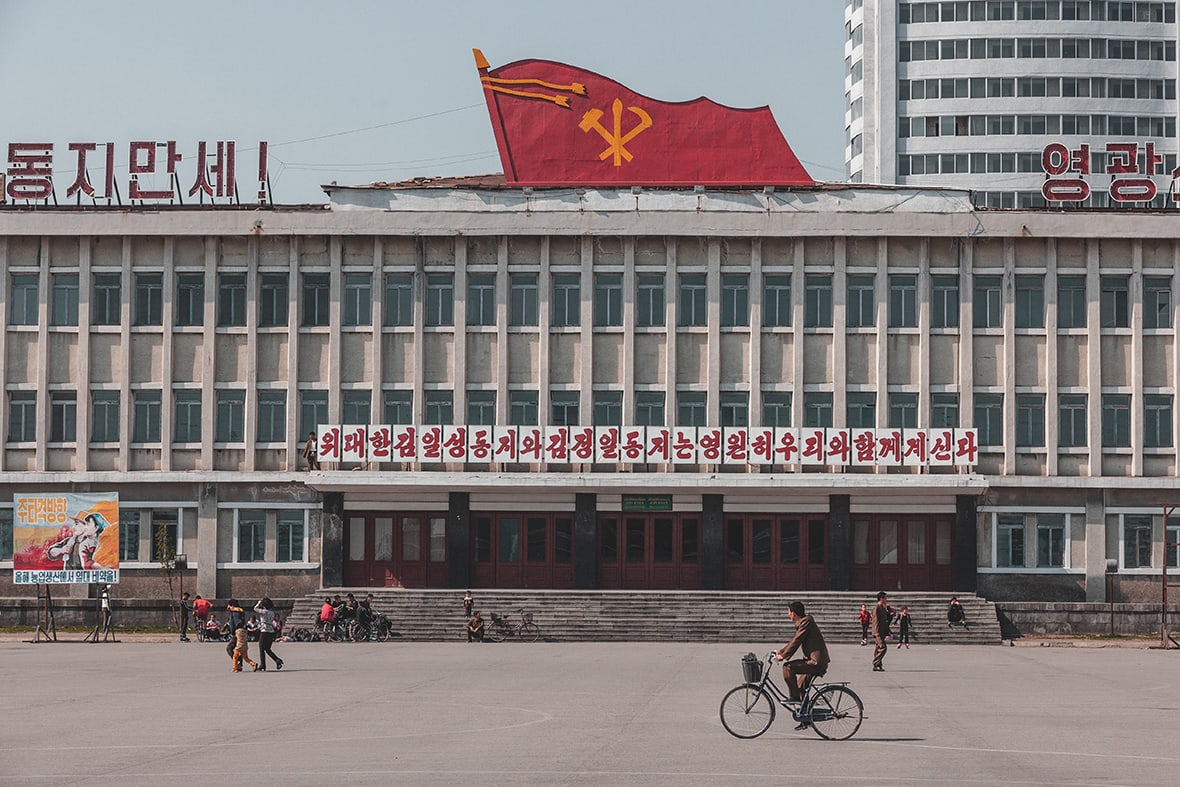
Wonsan’s square was off-limits to us, for reasons I never understood.
Next, I did something that we would consider quite normal anywhere else, but got us into some hot water. I noticed that across a wide (though notably empty) road, there was a huge public square, in which some kids were roller skating. Wanting to see more authentic local life, I harriedly crossed the street. A loud whistle blew, and I realized I hadn’t crossed at the crosswalk. The traffic cop – noticeably distraught by our actions – proceeded to lecture my guide for a full 20 minutes, and then barred us from entering the square. We instead headed to Old Wonsan Station, a rather dull museum famous for being the site where President Kim Il Sung boarded a train back to the capital in 1945 after WWII.
We had hoped to visit Songdowon Schoolchildren’s camp – one of the other few sites tourists are allowed access to – but unfortunately could not due to our weekend arrival. Our other option was a visit to Oriental Park, which also has a beach, but since it was cold and we had been to the beach the day before, we gave it a miss.
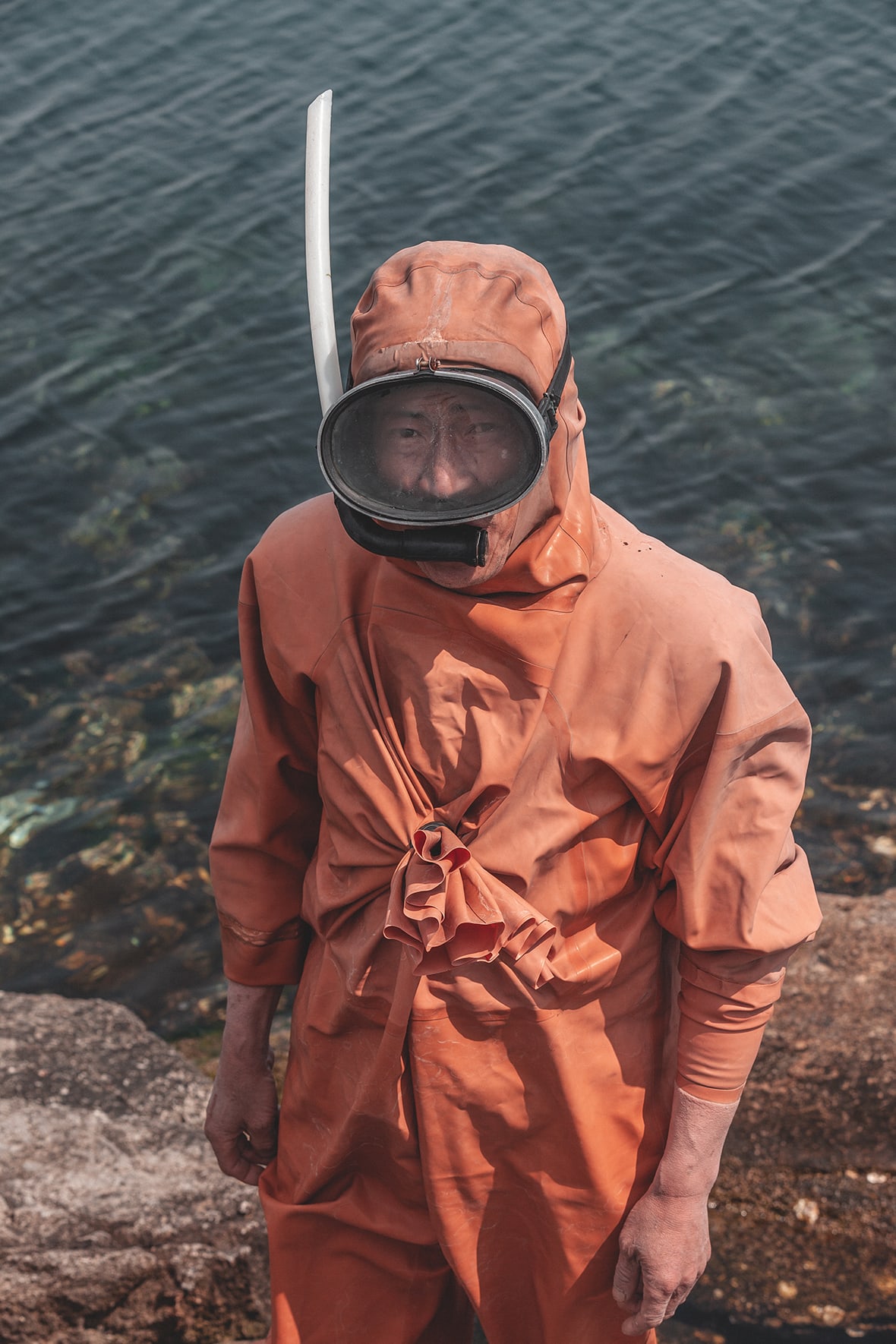
A clam diver in Wonsan
Instead, I practically begged for permission to walk along a long pier that led from our hotel to a small island. It had – unlike the roads – rather heavy traffic (though this was foot traffic) and we were finally blessed with the chance to observe some real local life. We saw locals fishing, and even one man peering out at us from behind an orange wetsuit straight out of the 50s diving for clams. Other locals were enjoying picnics with fresh seafood. Once we’d returned, it was time to board our van for the long drive back to Pyongyang.
I was very satisfied with my off-the-grid trip to Hamhung and Wonsan because provided me great insight into the “real” North Korea, off the normal tourist trail. Of course, it would have been nice if there had been fewer travel restrictions, but I understand that this – quite literally – comes with the territory!
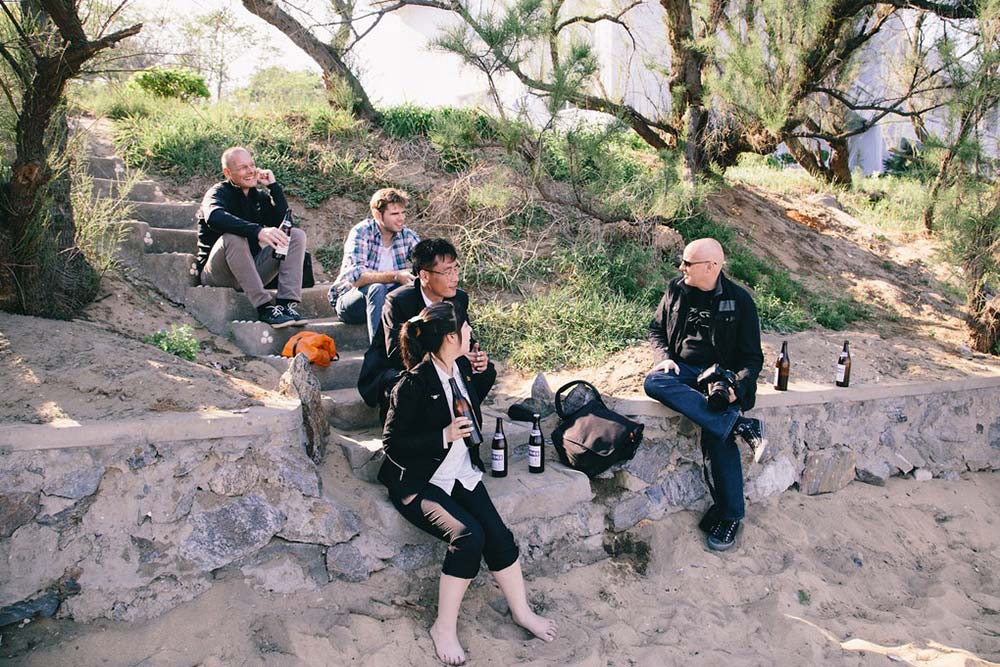
Drinking beer on Majon beach with our guides.


